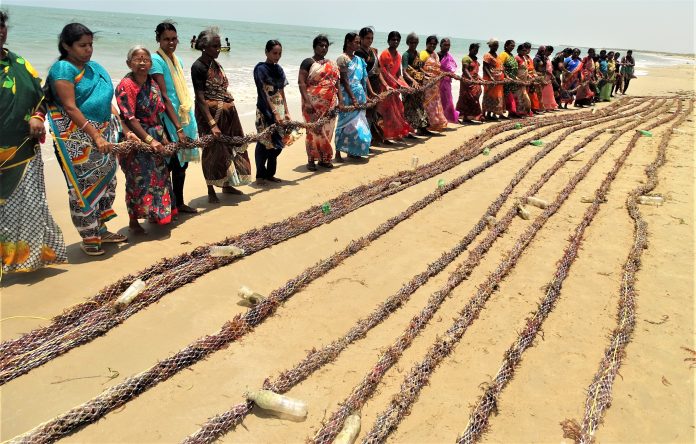Seaweed is one among several renewable marine resources in India. Around 1000 coastal inhabitants of the country are engaged in the activity and are making a decent living for themselves. A TCN Ground Report looks at how coastal inhabitants in India are earning their livelihood through seaweed cultivation.
Partho Burman | TwoCircles.net
KOLKATA – The maritime rural population living along the coastline of Gujarat (1600 km) and Tamil Nadu (1076 km) cultivate seaweeds for a living. With the help of certain technical proficiency, these people have made seaweed farming a successful venture and earn a decent earning of about Rs 15000 – Rs 20000 per month.
Seaweed is one among several renewable marine resources. Around 1000 coastal inhabitants are using three techniques, namely floating bamboo raft, tube net and long-line methods for undertaking seaweed farming. Nevertheless, the first two methods are widely practised. Farming takes about 40–60 days depending on species. It takes place mostly throughout the year except for the monsoon period when the sea is rough.
India possesses as many as 434 species of red seaweeds, 194 species of brown seaweeds and 216 species of green seaweeds. Most of these seaweeds are reasonably important. Kappaphycus alvarezii, in particular, has been cultivated in the states of Tamil Nadu, and tails are successful in Gujarat, Andhra Pradesh, and Maharashtra. However, fisher folks of Gujarat and Tamil Nadu are actively cultivating seaweeds compared to the other states mentioned above.
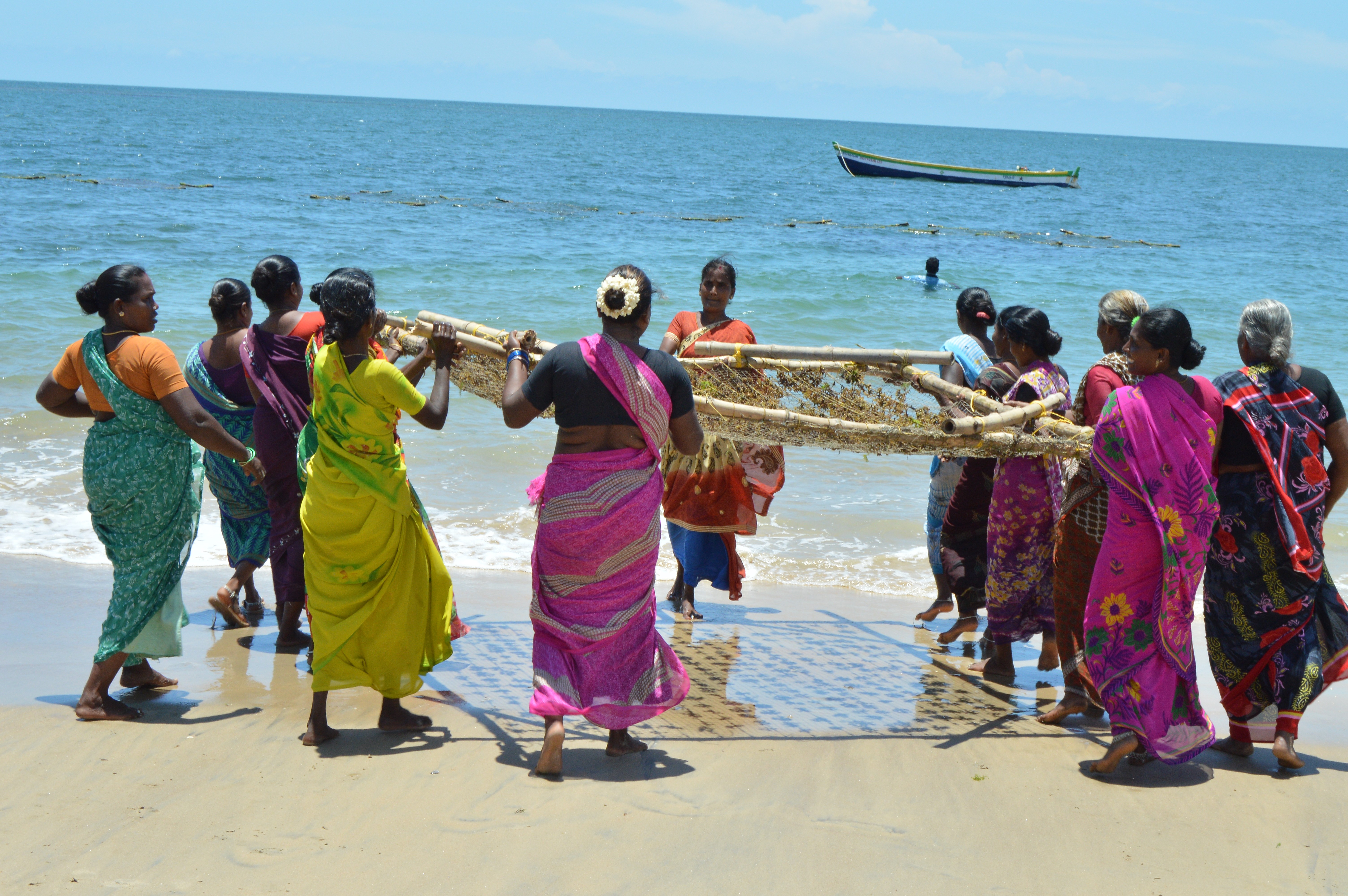
Experimentation on seaweed cultivation began about fifty-eight years ago by the scientists of Council of Scientific and Industrial Research–Central Salt and Marine Chemicals Research Institute (CSIR-CSMCRI) in Bhavnagar, Gujarat. They provide technical proficiency including the ambient parameters required for cultivation with salinity between 25-30 ppt (grams per kilogram), surface seawater temperature between 28-32 degrees Celsius, good mixing of water during high/low tide cycle for sufficient availability of nutrients and dissolved oxygen.
Farming is recommended in intertidal areas where water is always present during low tide so that plants do not get exposed to direct sunlight and desiccation. Notably, the cultivation also creates natural habitat, which provides shelter, diet and breeding grounds to several marine taxa and thus is responsible for structuring marine habitats and providing ecosystem services.
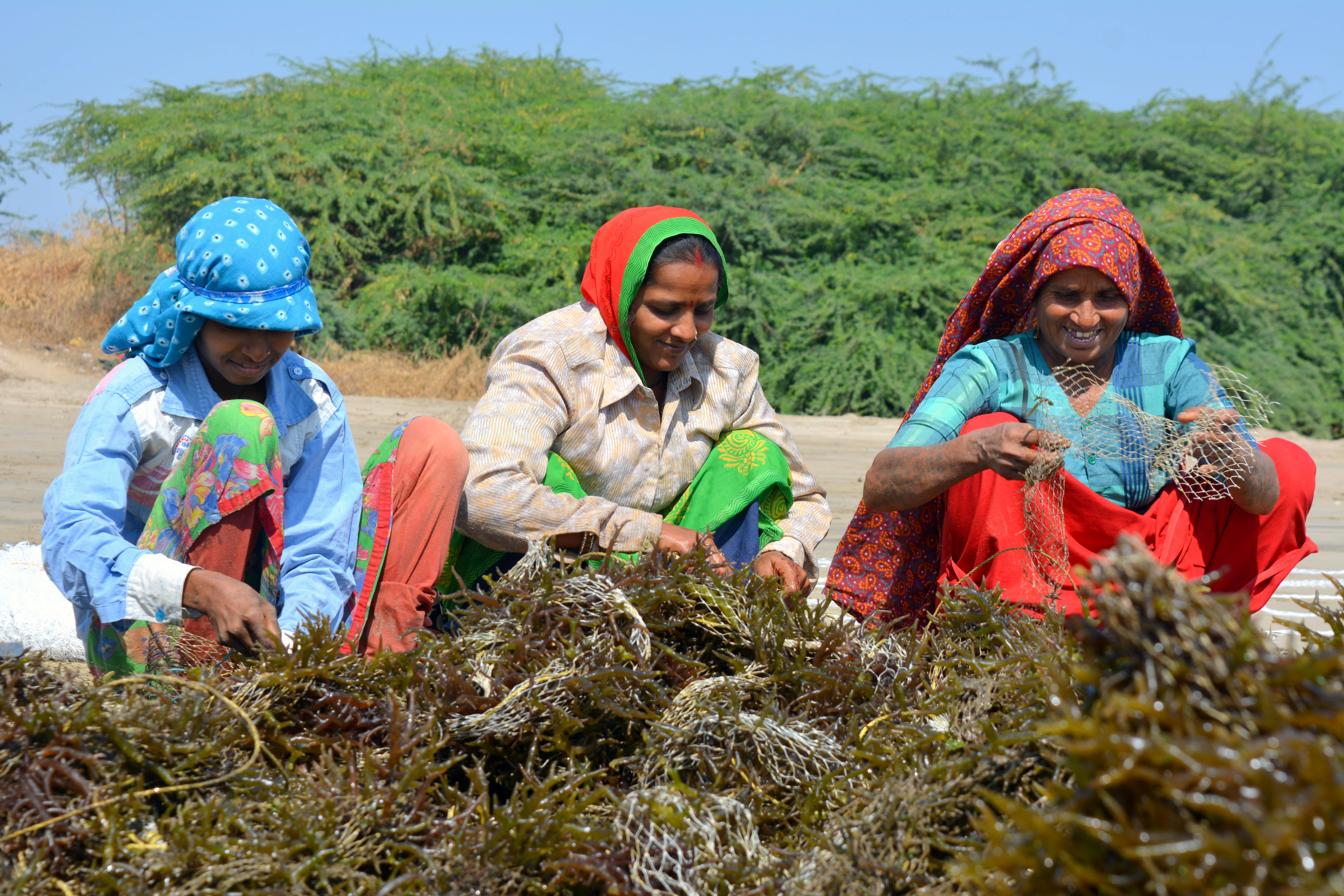
For the last eight years, Gohil Shakti Singh (35), belonging to the fish farming community at village Simar in Bhavnagar District of Gujarat, says his job is defined. “A 2-inch sapling of seaweed has to be fastened on a 25-metre long rope in a gap of less than a foot. From then on, I have to navigate for half a nautical mile into the sea on a dinghy to drop the rope together with seaweed. It is kept for 30-40 days in the seawater, where it rapidly grows,” informs Singh.
The fronds of alginophyte Sargassum cinctum were grown up to 15 to 52 cm in a 40 days growth cycle. This success has given impetus to initiate farming of yet another important agarophyte Gracilaria edulis at Krusadai Island in Tamil Nadu.
Economic importance of seaweed
Red algae, Gelidiella acerosa, are the principal source for the production of bacteriological grade agar, which is economically important while Gracilaria edulis yields food-grade agar and Gracilaria dura, agarose.
The techniques employed are simple, cost-effective, utilize readily available material, does not require specialized skills and can be practised at the individual farmer level by little training. Nevertheless, species of brown algal genus Sargassum and Turbinaria are exploited from nature by alginate industries; cultivation of these is not felt necessary due to large quantities of biomass available.
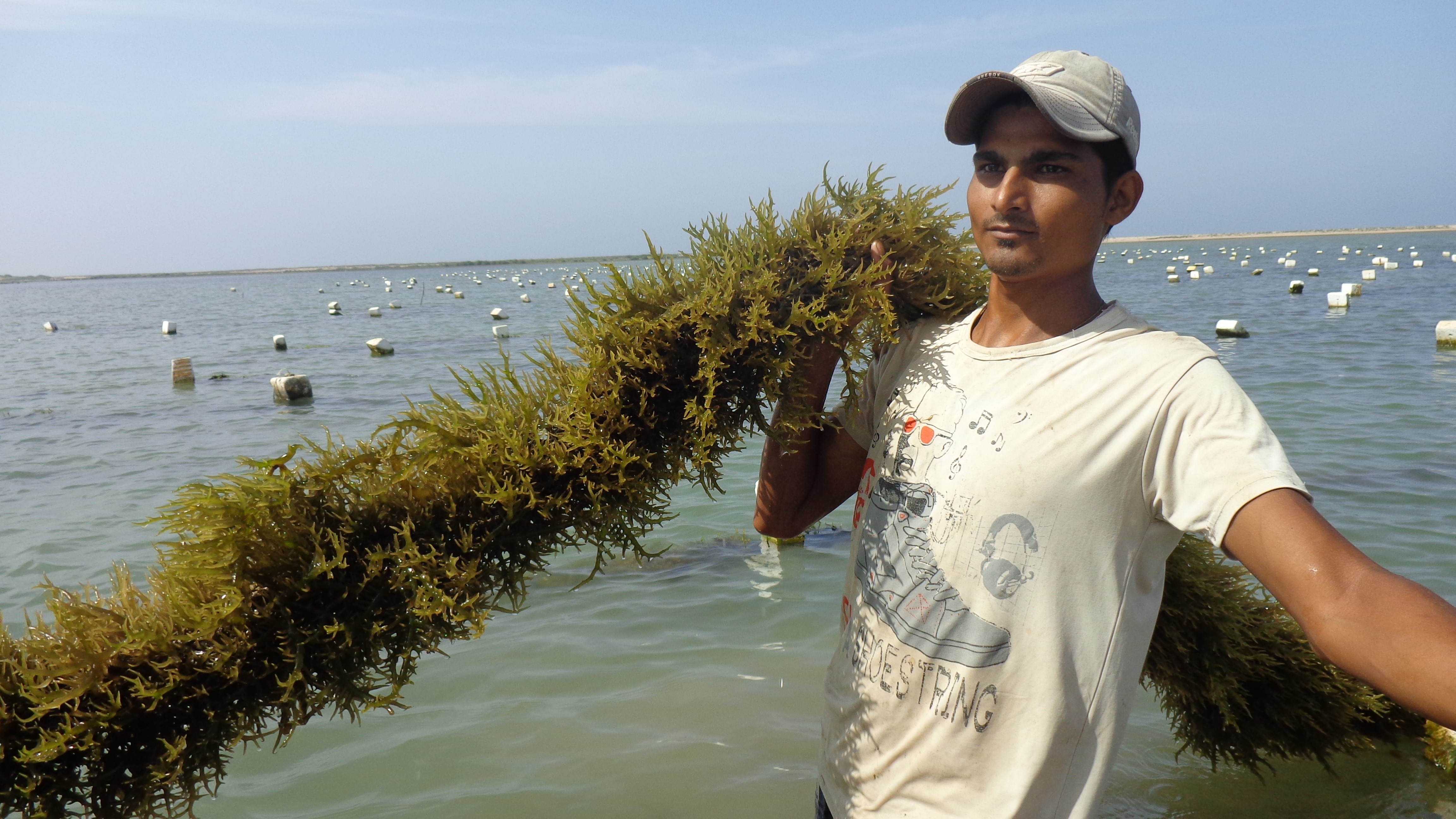
Talking to TwoCircles.net, Dr Vaibhav A. Mantri, Principal Scientist & Divisional Chair Applied Phycology and Biotechnology Division, CSIR-Central Salt and Marine Chemicals Research Institute, said, “The collectors are mostly women who collect the seaweeds for 10-12 days every month coinciding with low tides throughout the year. While for farming it takes 40-60 days depending on species and it takes place mostly throughout the year except for monsoon period when the sea is rough.”
The dried seaweeds are weighed (with about 30% moisture content permissible in commercial purchase) and sold to the dealers, who on the behalf of industry procure the biomass at a predetermined rate. The opportunities in the collection sector are limited and seasonal but for farming, they provide continuous remuneration.
“CSIR-CSMCRI helps the seaweed cultivation self-help groups to have linkages with our licensees. We also through various state governments try to train selected people in processing the harvested biomass so the additional opportunities could be created under the ‘Empowerment model’,” the scientist added.
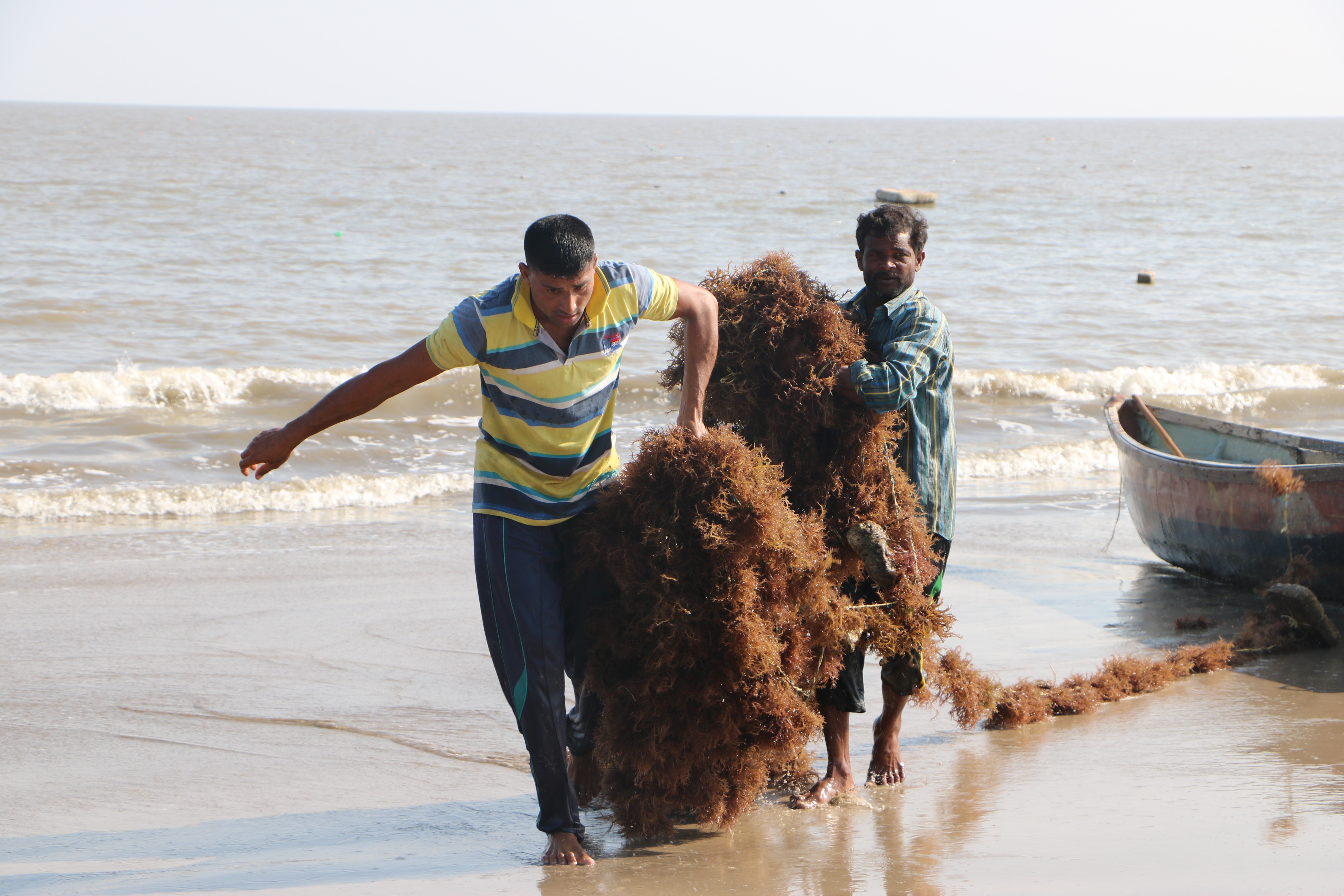
In the model where fishermen can handle 45 rafts (one raft seeding and harvesting per day) for each cycle and it can produce 9000 kg biomass per cycle (considering 200 output per raft), as per the handling capacity of the individual, the production can be increased.
Challenges
The precaution needs to be taken like other crop plants for epiphytes and diseases, conservation of good and elite germplasm for subsequent seasons during monsoon. The selection of appropriate methods of farming is yet another deciding factor for success. To date, only Kappaphycus alvarezii has been commercially cultivated.
“Seaweed with germplasm stops growing rather it gets decayed while the weed without germplasm is producing much better crops,” A.Jeyalakshmi, a seaweed farmer from Rameswaram admits over phone.
“The biggest challenge is the availability of adequate seed material for commercial activities, we have worked out on this and the new protocol has been developed for production of seed,” discloses Dr Mantri.
The sector is currently operating as an informal industry and needs conscious efforts in the establishment of Self Help Groups (SHGs) and fisheries co-operative in all the coastal states and Union Territory and connecting them with the seaweed processing industry. At present, permission is required from several state departments to start commercial farming and the establishment of new entrepreneurs.
According to him, there should be a single agency, which should be granting permission to undertake commercial farming. The special use of coastal areas for seaweed farming and other activities needs clarity, for better utilization of space. Therefore, demarcation of specific cultivation areas along the coast and establishing a permanent anchoring system for undertaking commercial cultivation is essential.
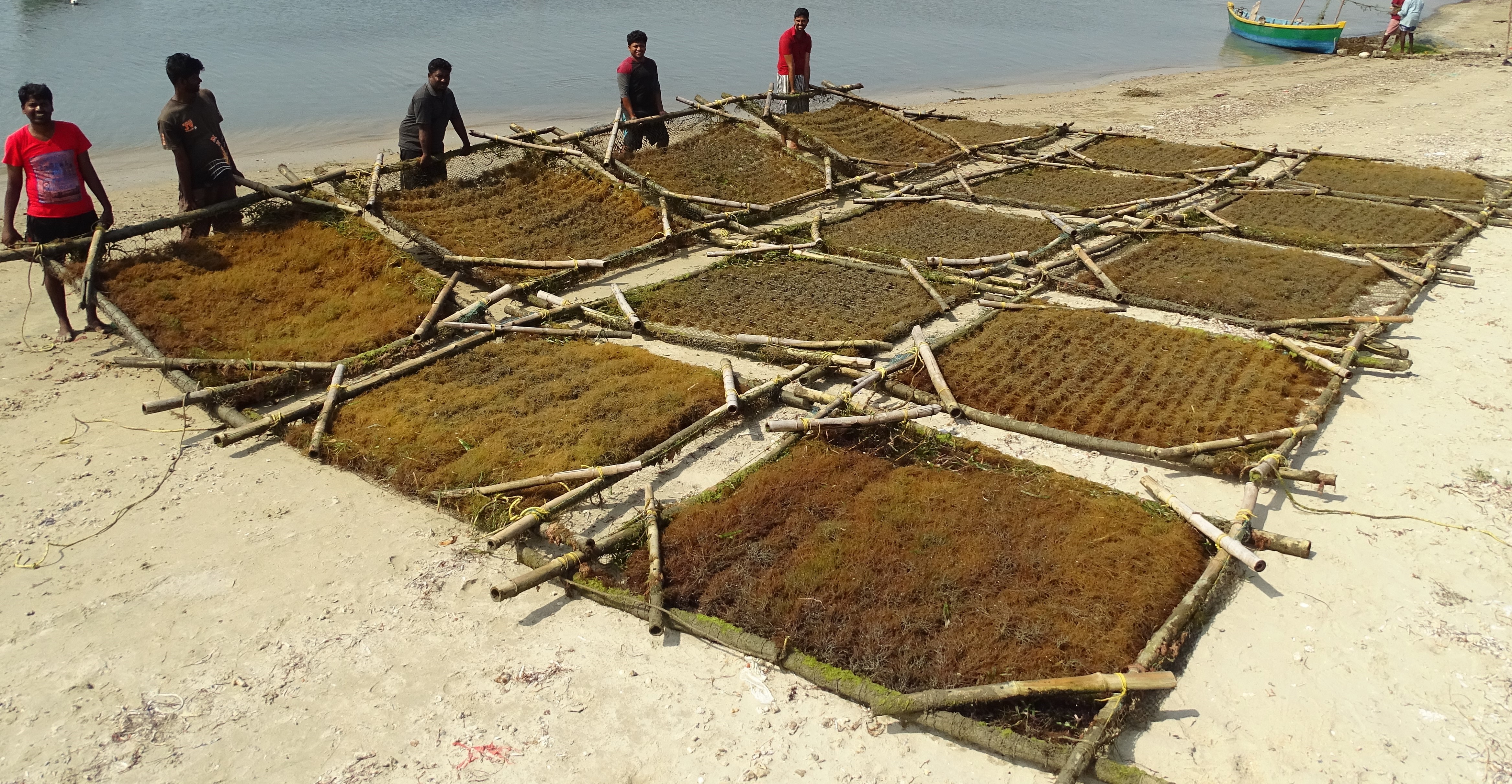
Besides, the ban on the export of seaweed biomass needs to be removed. This ban should be only removed in the case of cultivated material as this would give impetus to farming rather than natural collection, which is an unsustainable practice.
Since commercial seaweed farming is put to the vagaries of nature and cyclones, disease and rain are the common impediments that might impede the prospects of the farming business. The beneficiaries should be given crop insurance to keep the sustained interest of fishermen in this activity.
Research Institute’s role
Council of Scientific and Industrial Research-Central Salt and Marine Chemicals Research Institute, Bhavnagar is the leading national institute working on seaweed cultivation and utilization, where Applied Phycology and Biotechnology formerly Algology division dedicated only to carry the research on this domain. The first-ever seaweed cultivation experiments were conducted in India at Porbandar, Gujarat from November 10 – December 20, 1963, by Francisca Thivy the founder of the Algology division at CSIR-CSMCRI.
“The institute takes pride in being the first to pioneer Kappaphycus alvarezii cultivation, heralding an era of commercial seaweed farming in India,” states Dr Mantri. The institute has been imparting needed skills for farming for the last five decades. Given the fact that there is a low literacy level in the coastal rural area due to poor educational facilities coupled with meagre self-employability, seaweed farming is paving the way for young entrepreneurs and women fisher folks.
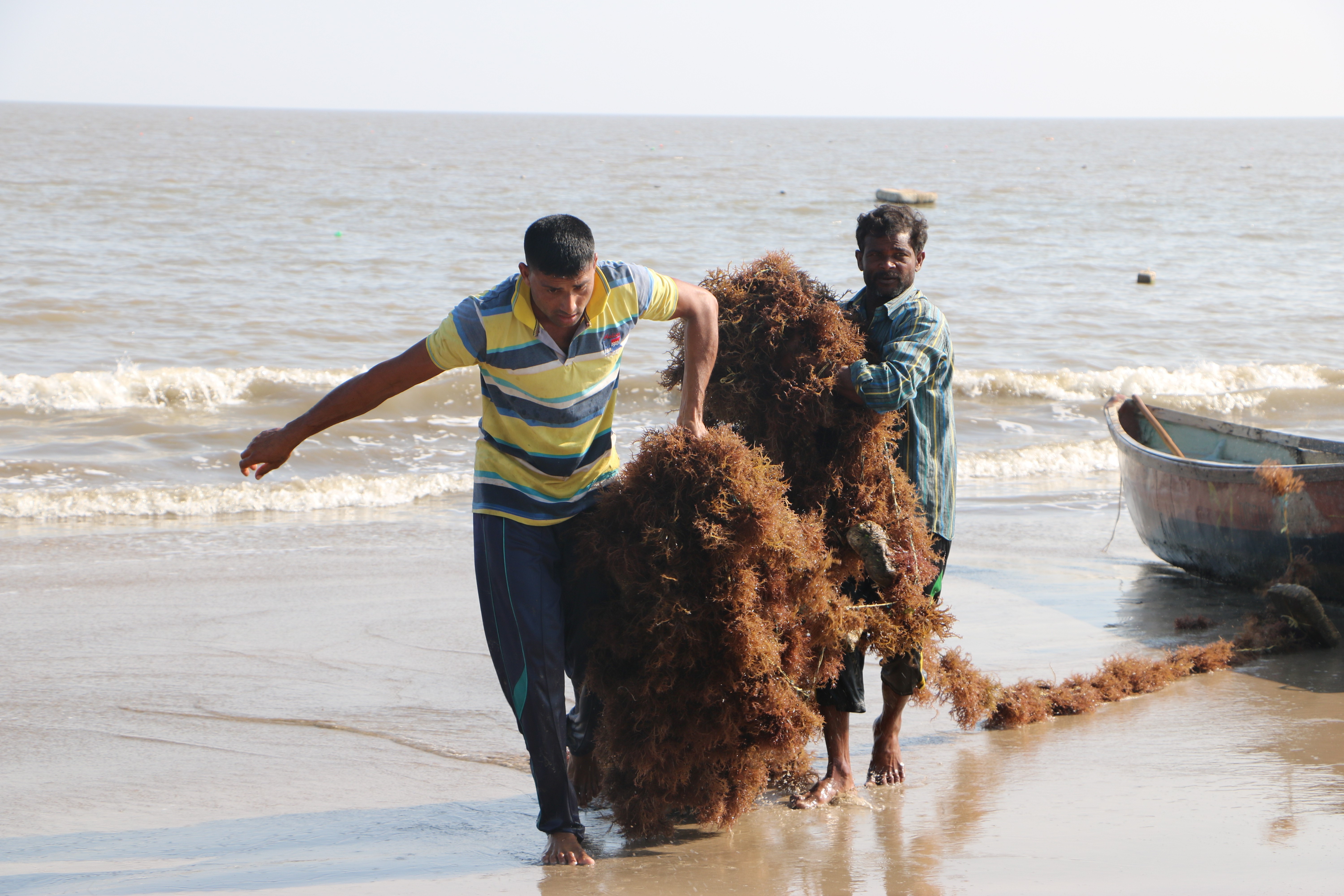
According to Dr Mantri, one of the surveys carried out revealed that the monthly income of each member is about Rs.15000-Rs.20000. The study confirms improvement in the socioeconomic status of coastal inhabitants engaging in seaweed farming.
“These accrued benefits have attracted more participation from women fisher folks and offer opportunities for economic empowerment to women contributing positively toward reducing gender bias. Till today more than 5000 people have been sensitised for this activity across India and there are about 1500 fishermen in Tamil Nadu alone who have engaged in seaweed farming of which about 90% are women,” Dr Mantri told TwoCircles.net.
Positive effect on marine environment
Any new industry in the coastal area acts as a harbinger of economic growth, but also brings a lot of issues such as pollution. The farming of seaweed on the other hand is a non-polluting industry. It also on the other hand helps in reducing the pressure on natural harvest, which in turn aids conservation of natural resources.
When commercial cultivation takes place the niche environment is created, thus cultivation rates and biomass growth provide shelter, diet, habitat and breeding grounds to several marine taxa and thus are responsible for structuring marine habitats and providing ecosystem services.
Nevertheless, one needs to be cautious as there would be a lot of trash material going to be formed due to old /used infrastructure. The proper disposal protocol needs to be developed for this to take care of issues by environmental activities.
Partho Burman is an award-winning independent journalist based in Kolkata. He writes inspirational, motivational and environmental stories. He tweets at @ParthoBurman.


